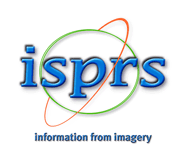Analysis of the Impact of Restaurant Genre Diversity on Staying Population — Using Data from Private Gourmet Information Websites
Keywords: Restaurant diversity, Train Station, Urban Development, GIS, Pedestrian Traffic Data
Abstract. In the context of smart city development, restaurants are key elements contributing to urban vibrancy. While previous studies have emphasized the number of restaurants as a driver of urban activity, this study investigates not only the number but also the genre diversity of restaurants around train stations and their effects on the staying population, an indicator of vibrancy. Using restaurant data scraped from the gourmet website "Tabelog" and smartphone-based population flow data provided by CSIS at the University of Tokyo, this study analyzes 10,164 250-meter mesh units within Tokyo’s 23 wards. Simpson’s Diversity Index was employed to quantify genre diversity, and Ordinary Least Squares (OLS) regression was used to evaluate the relationship between the staying population and several factors, including restaurant count, diversity index, proximity to train stations, and the number of establishments.
The results show that restaurant genre diversity has a statistically significant and positive effect on the staying population, independent of restaurant count. Additionally, areas near train stations tend to have both higher restaurant concentrations and greater diversity, confirming stations as hubs of urban diversity. These findings suggest that enhancing vibrancy in urban areas requires not only increasing the number of restaurants but also promoting genre diversity. This research highlights the value of private gourmet information websites as rich sources for detailed urban analysis in the era of smart cities.





